IO module secures Resato hydrogen filling stations
- Details
- Hits: 661
As the market for hydrogen mobility grows, with H2 as a promising energy source, the infrastructure for its provision is increasingly coming into focus. Resato Hydrogen Technology has along with Turck implemented an innovative concept for the locations of hydrogen stations: modular Hydrogen filling stations guarantee equipped with IP67-AtexI/O modules quick commissioning and high scalability.

Contents
- Investors want security
- Intensive advice on concept development
- Series production as the next stage
- Frequently asked questions
Investors want security
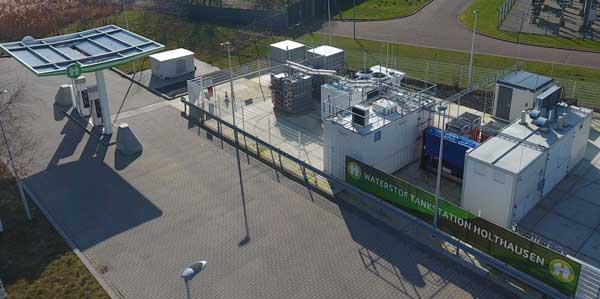 Do companies invest in hydrogenInfrastructure, they attach great importance to scalability for future market requirements. That's why the Dutch hydrogen filling station manufacturer Resato Hydrogen Technology BV from Assen in the Netherlands relies on the decentralized concept of Turck's IP67 I/O module. It is the only one on the market that offers a comprehensive solution for modular systems for all signal types including safety, even in hazardous areas.
Do companies invest in hydrogenInfrastructure, they attach great importance to scalability for future market requirements. That's why the Dutch hydrogen filling station manufacturer Resato Hydrogen Technology BV from Assen in the Netherlands relies on the decentralized concept of Turck's IP67 I/O module. It is the only one on the market that offers a comprehensive solution for modular systems for all signal types including safety, even in hazardous areas.
Hydrogen is used as Energy sources in the future play an important role. In particular, trucks and buses will increasingly switch to H2 mobility. Hydrogen also seems to be establishing itself as an energy source for cars in the long term. Resato is one of the companies that is benefiting from this trend with its hydrogen filling stations.
The company's innovation lies in the High pressure technology. Resato has established itself in the waterjet cutting niche market since the early 90s. The engineers have also been using the know-how generated here in the development and construction of hydrogen filling stations since 2018. The company has already produced and put more than 45 hydrogen filling stations into operation across Europe - 9 of them in the Netherlands.
H2 filling stations with 2 pressure levels for trucks and cars
 Hydrogen filling stations can obtain their fuel in two different ways:
Hydrogen filling stations can obtain their fuel in two different ways:
- about one Electrolyzer, which uses electric current to cause a chemical reaction and thus separates water into hydrogen and oxygen or
- and Hydrogen tanker truck or tube trailer. The hydrogen from a tube trailer is compressed and cooled down to 350 bar in three stages. It is then stored in buffer storage for refueling trucks. Alternatively, the hydrogen is compressed to 700 bar in a fourth compression stage and stored in a separate buffer. By pre-cooling the hydrogen, the hydrogen cars can be refueled with hydrogen much more quickly via the 700 bar fuel pumps.
A hydrogen filling station is therefore much more complex than a carbon-based fuel filling station. The hydrogen filling station system must deliver the hydrogen in a series of cooling and compression steps necessary pressure bring. Bigger pressure in turn leads to increased temperatures. That's why the hydrogen has to be cooled down again and again.
Hydrogen requires explosion protection
The complexity of hydrogen filling stations lies in the steering. Resato has developed a patented algorithm for this that allows the fastest possible refueling depending on temperature and pressure. At the I/O level, the explosive H2 poses a particular challenge to the automation concept. The hydrogen requires an explosion protection concept and the installed components must have appropriate approvals.
In addition, the hydrogen filling station must be maximum maintenance because there are no staff on site who can make settings. Mainly temperature and pressure signals as well as switching signals from control valves are to be processed here. There are also safety-related signals from valves, emergency stop buttons and other safety sensors.
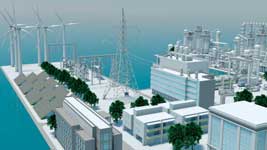 Hydrogen + fuel cell: components for energy generation
Hydrogen + fuel cell: components for energy generation
In the first H2 gas station version, Resator still has passive refueling systems I/O technology wired. Sensor and actuator signals were placed on passive distributors at the buffer storage and from there via multicoreLines led to the control. This reliably functioning solution was not very flexible as soon as the system was to be expanded to include additional buffer storage.
“It was electrically very complex to add a unit. We also had to completely redesign the software. So we decided to divide the whole system into modules so that we can control each module individually,” explains Remco Lagendijk, Electrical and Instrumentation Engineer at Resato, the beginning of the modular gas station concept.
Modular design ensures more flexibility
 The second generation of Resato hydrogen filling stations has a modular design. Buffer storage, cooling units and compressors can now be flexibly added and combined. To make it easier to supplement the aggregates, all signals on each aggregate must be in one data line converge.
The second generation of Resato hydrogen filling stations has a modular design. Buffer storage, cooling units and compressors can now be flexibly added and combined. To make it easier to supplement the aggregates, all signals on each aggregate must be in one data line converge.
The buffer storage requires an I/O solution for this Industrial Ethernet in the form of Profinet. Resato wanted that housing and save mechanical effort. That's why the developers looked IP67 I/O modules, which are temperature-resistant and suitable for outdoor use. However, the modules should also have approval for Atex Zone 2 and be suitable for connecting intrinsically safe signals from Zones 1 and 0. This requirement causes the automation engineer to sweat.
Looking for an automation partner who also supports this decentralized concept hazardous area can support, the Resato team has come to the Hannover Messe Gathered information and found it. The engineers saw many IP67 IO solutions at the exhibition stands.
But when it comes to the question of IP67 Atex approval Many providers had to adapt. “Except for Turck. They were able to offer us different solutions for IP67 in Atex zones. We understood that Turck is familiar with this and already has corresponding components on the market,” reports Mr. Lagendijk.
Intensive advice on concept development
 Resato and Turck then have one decentralized I/O concept developed for the buffer storage. “The support was really good. "They didn't just give us a few products and say, 'Good luck with that,' but we discussed the products intensively and thought through different options," explains Niels de Jong, engineer for research and development. "Turck even gave us the exact ones Cablestypes with the appropriate lengths recommended. Resato aims to be the global technology leader in the field of hydrogen filling stations. We need partners like Turck for this.”
Resato and Turck then have one decentralized I/O concept developed for the buffer storage. “The support was really good. "They didn't just give us a few products and say, 'Good luck with that,' but we discussed the products intensively and thought through different options," explains Niels de Jong, engineer for research and development. "Turck even gave us the exact ones Cablestypes with the appropriate lengths recommended. Resato aims to be the global technology leader in the field of hydrogen filling stations. We need partners like Turck for this.”
The I/O concept was designed to be completely decentralized – including the intrinsically safe ones Sensorsignals from Atex zones 0 and 1. With the IMC family, Turck has special Interface-Building blocks in IP67 in the portfolio. They are connected between the I/O device and the Ex sensor or actuator. They safely separate the circuits and transform the signal currents. Even the safety-related signals are distributed decentrally to the IP67 I/O module TBPN, which communicates with the safety controller via the Profisafe protocol.
Modularity makes offline testing easier and shortens commissioning
“One of the advantages why we chose the Turck solution is the possibilities Offline testingsays Remcoo Lagendijk. “We used to have to test in production, then we dismantled everything and rewired everything on site at the customer’s site. Then of course we had to test again whether all inputs and outputs were connected correctly. Today we are testing our systems and letting everyone Plug connected to the remote I/O modules. We then only have to connect the power and data cables to the customer. This saves us a few days of commissioning time for the electrical work, which means we can work with fewer electrical engineers.”
 Measurement technology ensures quality in hydrogen production
Measurement technology ensures quality in hydrogen production
He emphasizes this advantage modular concept: “Commissioning is a very critical phase. When errors occur here, it usually takes much longer to fix them than in production. Because in our own production, all the experts, the right tools and the necessary spare parts are immediately at hand, but not at the customer’s site.”
Optimally scalable with consistent modularity
 Resato thought the modular concept through to the end and also set up the control software in a modular manner. There is a module in the control software expandable, without having to rewrite the entire code. “It’s almost like copy-and-paste,” says Mr. Lagendijk.
Resato thought the modular concept through to the end and also set up the control software in a modular manner. There is a module in the control software expandable, without having to rewrite the entire code. “It’s almost like copy-and-paste,” says Mr. Lagendijk.
Based on the modular concept, Resato's hydrogen filling stations are very easy to set up scale. “If the customer wants to expand their storage and needs more buffer storage, then that’s not a problem for us – it’s very easy, especially from the electrical engineering side and the control,” adds Niels de Jong.
Series production is the next level
The demand for H2 filling stations is continuously increasing. Resato therefore expects production to be gradually transferred from the project organization to the Serial Production can be changed. The company is prepared for this with the modular H2 gas station concept and the modular I/O architecture. Because the concept enables entry into series production at any time. Individual modules such as buffer storage or compressors can be pre-produced in stock and then put together to suit the customer's specific needs. These economies of scale will reduce the costs and time-to-market of hydrogen filling stations.
Frequently asked questions
How many hydrogen filling stations are there currently in Germany?
In Germany there are currently over 80 public hydrogen filling stations, which are operated by H2 Mobility Germany. These stations supply 700 bar fuel cell vehicles, including cars and small commercial vehicles as well as waste collection vehicles. In addition, four further filling stations are being planned, constructed or commissioned. There are 350 hydrogen stations for buses and trucks that are refueled at 24 bar. A further 18 refueling options for 350 bar are currently being implemented.
For current and detailed information about the availability and locations of hydrogen filling stations in Germany, the H2.Live platform offers real-time data as well as an overview of all public hydrogen filling stations in Germany and Europe
Why are there so few hydrogen filling stations?
The limited number of hydrogen filling stations is mainly due to the high investment and operating costs as well as the complex technological requirements. Building a dense, comprehensive network requires significant upfront investment in infrastructure, including the production, storage and distribution of hydrogen under high pressures.
In addition, the technical challenges, such as ensuring the safety and efficiency of the hydrogen supply, should not be underestimated. Since the demand for hydrogen vehicles is still low compared to conventional fuels or electric cars, investors are hesitant to invest in such a capital-intensive and technologically demanding network without having a clear idea of future market development and customer popularity. That's why the expansion of the nationwide hydrogen filling station network is so slow.
You might also be interested in...
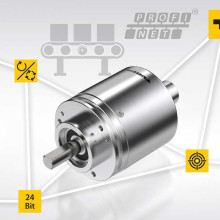
Encoder: Incremental, absolute and communicative
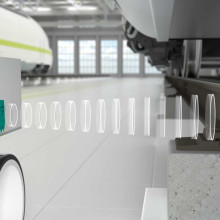
RFID and Barcodes | Industrial identification
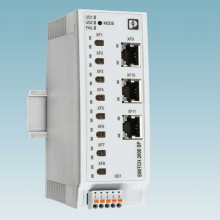
Ethernet switches | The data driver in the network

LED signal light with and without IO-Link
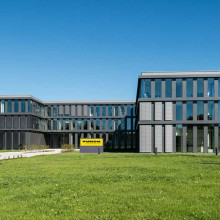
Turck | Your global automation partner
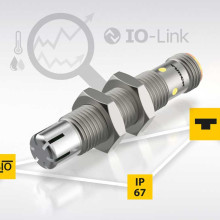
Temperature sensor – humidity sensor – vibration sensor
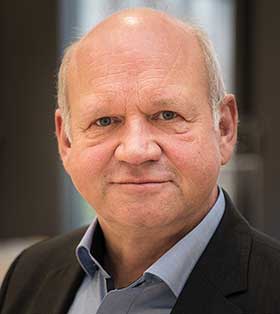
Klaus Albers is Head of Marketing Services + Public Relations, Hans Turck GmbH + Co. KG, Mülheim an der Ruhr.
